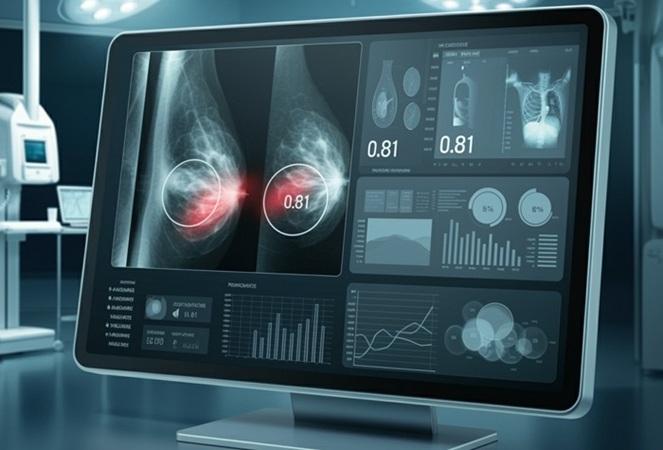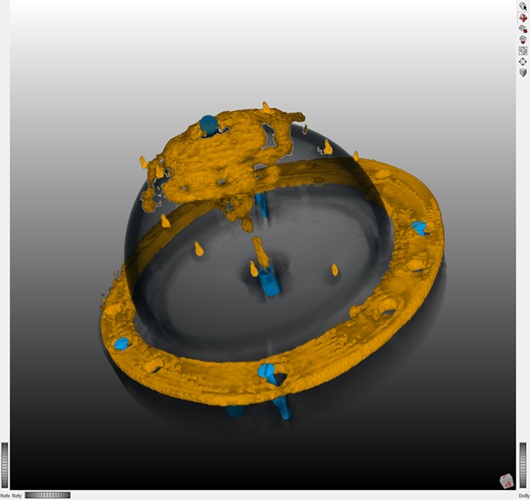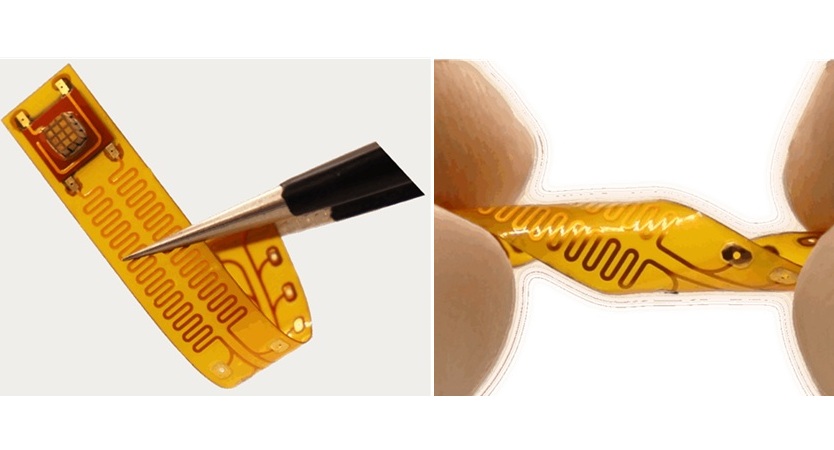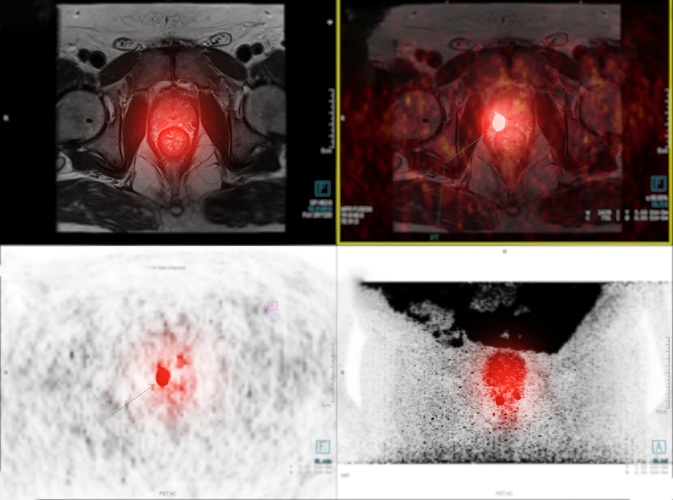Brain Difference in Psychopaths Identified by DT-MRI Tractography
|
By MedImaging International staff writers Posted on 25 Aug 2009 |
British researchers have found differences in the brain that may provide a biologic explanation for psychopathy.
The study investigated the brain biology of psychopaths with convictions that included attempted murder, manslaughter, multiple rapes with strangulation, and false imprisonment. Using a powerful imaging technique, the researchers have highlighted biologic differences in the brain that may underpin these types of behavior and provide a more comprehensive understanding of criminal psychopathy.
The study was conducted by Prof. Declan Murphy and colleagues Dr. Michael Craig and Dr. Marco Catani from the Institute of Psychiatry at King's College London (UK). The results of their study were published in the June 9, 2009, issue of the journal Molecular Psychiatry. Dr. Michael Craig said, "If replicated by larger studies the significance of these findings cannot be underestimated. The suggestion of a clear structural deficit in the brains of psychopaths has profound implications for clinicians, research scientists and the criminal justice system.”
While psychopathy is strongly associated with serious criminal behavior (e.g., rape and murder) and repeat offending, the biologic basis of psychopathy remains poorly understood. Moreover, some investigators stress mostly social reasons to explain antisocial behaviors. To date, nobody has investigated the "connectivity” between the specific brain regions implicated in psychopathy.
Earlier studies had suggested that dysfunction of specific brain regions might underpin psychopathy. Such areas of the brain were identified as the amygdale, i.e., the area associated with emotions, fear, and aggression, and the orbitofrontal cortex (OFC), the region that handles with decision-making. There is a white matter tract that connects the amygdala and OFC, which is called the uncinate fasciculus (UF). However, no one had ever studied the UF in psychopaths. The investigators from King's used an imaging method called in vivo diffusion tensor magnetic resonance imaging (DT-MRI) tractography to analyze the UF in psychopaths.
The investigators found a significant reduction in the integrity of the small particles that make up the structure of the UF of psychopaths, compared to control groups of people with the same age and intelligence quotient (IQ). In addition, the level of abnormality was significantly related to the degree of psychopathy. These results suggest that psychopaths have biologic differences in the brain that may help to explain their offending behaviors.
Dr Craig added, "This study is part of an ongoing program of research into the biological basis of criminal psychopathy. It highlights that exciting developments in brain imaging such as DT-MRI now offer neuroscientists the potential to move towards a more coherent understanding of the possible brain networks that underlie psychopathy, and potentially towards treatments for this mental disorder.”
Related Links:
Institute of Psychiatry at King's College London
The study investigated the brain biology of psychopaths with convictions that included attempted murder, manslaughter, multiple rapes with strangulation, and false imprisonment. Using a powerful imaging technique, the researchers have highlighted biologic differences in the brain that may underpin these types of behavior and provide a more comprehensive understanding of criminal psychopathy.
The study was conducted by Prof. Declan Murphy and colleagues Dr. Michael Craig and Dr. Marco Catani from the Institute of Psychiatry at King's College London (UK). The results of their study were published in the June 9, 2009, issue of the journal Molecular Psychiatry. Dr. Michael Craig said, "If replicated by larger studies the significance of these findings cannot be underestimated. The suggestion of a clear structural deficit in the brains of psychopaths has profound implications for clinicians, research scientists and the criminal justice system.”
While psychopathy is strongly associated with serious criminal behavior (e.g., rape and murder) and repeat offending, the biologic basis of psychopathy remains poorly understood. Moreover, some investigators stress mostly social reasons to explain antisocial behaviors. To date, nobody has investigated the "connectivity” between the specific brain regions implicated in psychopathy.
Earlier studies had suggested that dysfunction of specific brain regions might underpin psychopathy. Such areas of the brain were identified as the amygdale, i.e., the area associated with emotions, fear, and aggression, and the orbitofrontal cortex (OFC), the region that handles with decision-making. There is a white matter tract that connects the amygdala and OFC, which is called the uncinate fasciculus (UF). However, no one had ever studied the UF in psychopaths. The investigators from King's used an imaging method called in vivo diffusion tensor magnetic resonance imaging (DT-MRI) tractography to analyze the UF in psychopaths.
The investigators found a significant reduction in the integrity of the small particles that make up the structure of the UF of psychopaths, compared to control groups of people with the same age and intelligence quotient (IQ). In addition, the level of abnormality was significantly related to the degree of psychopathy. These results suggest that psychopaths have biologic differences in the brain that may help to explain their offending behaviors.
Dr Craig added, "This study is part of an ongoing program of research into the biological basis of criminal psychopathy. It highlights that exciting developments in brain imaging such as DT-MRI now offer neuroscientists the potential to move towards a more coherent understanding of the possible brain networks that underlie psychopathy, and potentially towards treatments for this mental disorder.”
Related Links:
Institute of Psychiatry at King's College London
Latest MRI News
- AI-Assisted Model Enhances MRI Heart Scans
- AI Model Outperforms Doctors at Identifying Patients Most At-Risk of Cardiac Arrest
- New MRI Technique Reveals Hidden Heart Issues
- Shorter MRI Exam Effectively Detects Cancer in Dense Breasts
- MRI to Replace Painful Spinal Tap for Faster MS Diagnosis
- MRI Scans Can Identify Cardiovascular Disease Ten Years in Advance
- Simple Brain Scan Diagnoses Parkinson's Disease Years Before It Becomes Untreatable
- Cutting-Edge MRI Technology to Revolutionize Diagnosis of Common Heart Problem
- New MRI Technique Reveals True Heart Age to Prevent Attacks and Strokes
- AI Tool Predicts Relapse of Pediatric Brain Cancer from Brain MRI Scans
- AI Tool Tracks Effectiveness of Multiple Sclerosis Treatments Using Brain MRI Scans
- Ultra-Powerful MRI Scans Enable Life-Changing Surgery in Treatment-Resistant Epileptic Patients
- AI-Powered MRI Technology Improves Parkinson’s Diagnoses
- Biparametric MRI Combined with AI Enhances Detection of Clinically Significant Prostate Cancer
- First-Of-Its-Kind AI-Driven Brain Imaging Platform to Better Guide Stroke Treatment Options
- New Model Improves Comparison of MRIs Taken at Different Institutions
Channels
Radiography
view channel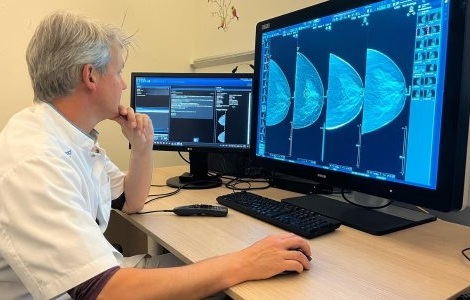
AI Hybrid Strategy Improves Mammogram Interpretation
Breast cancer screening programs rely heavily on radiologists interpreting mammograms, a process that is time-intensive and subject to errors. While artificial intelligence (AI) models have shown strong... Read more
AI Technology Predicts Personalized Five-Year Risk of Developing Breast Cancer
Breast cancer remains one of the most common cancers among women, with about one in eight receiving a diagnosis in their lifetime. Despite widespread use of mammography, about 34% of patients in the U.... Read moreUltrasound
view channel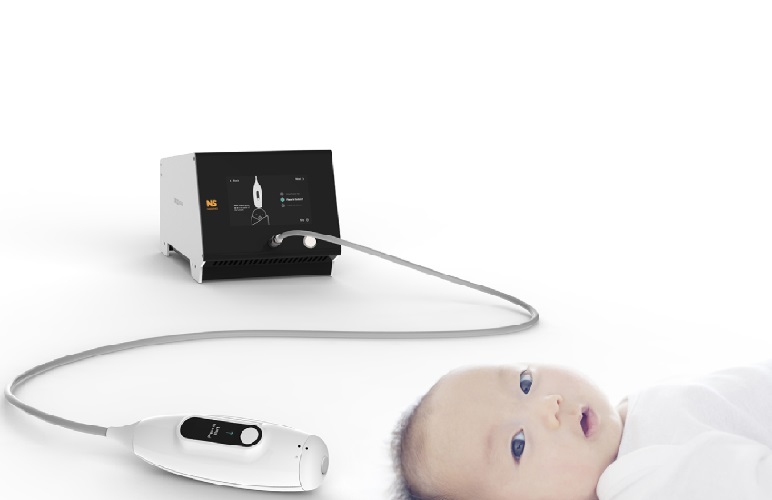
Non-Invasive Ultrasound-Based Tool Accurately Detects Infant Meningitis
Meningitis, an inflammation of the membranes surrounding the brain and spinal cord, can be fatal in infants if not diagnosed and treated early. Even when treated, it may leave lasting damage, such as cognitive... Read more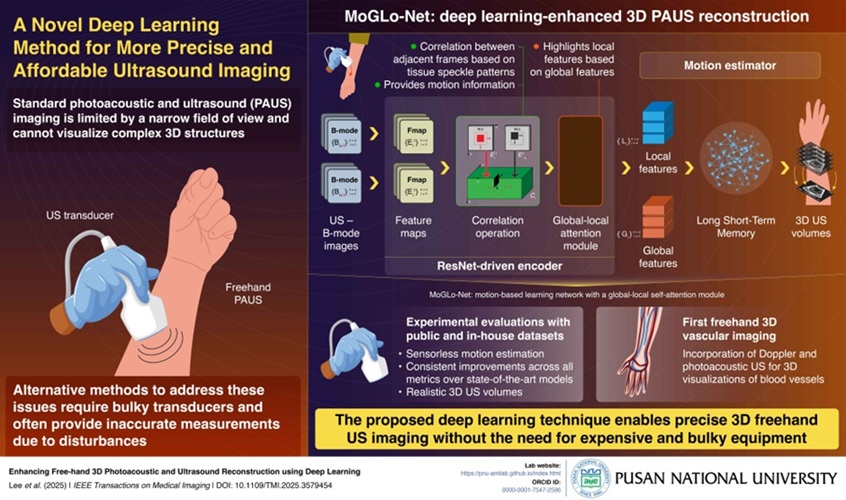
Breakthrough Deep Learning Model Enhances Handheld 3D Medical Imaging
Ultrasound imaging is a vital diagnostic technique used to visualize internal organs and tissues in real time and to guide procedures such as biopsies and injections. When paired with photoacoustic imaging... Read moreNuclear Medicine
view channel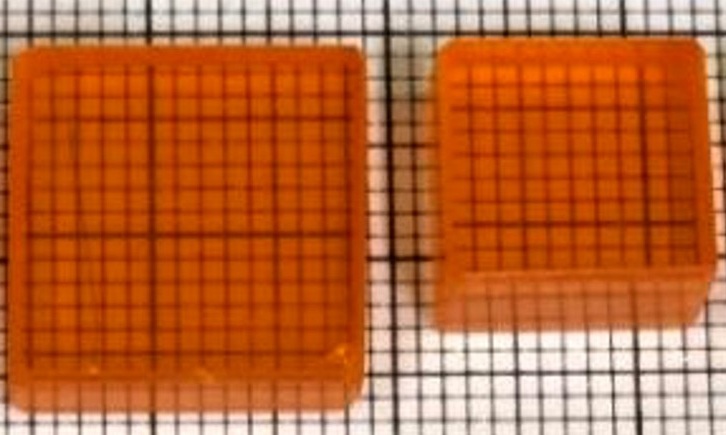
New Camera Sees Inside Human Body for Enhanced Scanning and Diagnosis
Nuclear medicine scans like single-photon emission computed tomography (SPECT) allow doctors to observe heart function, track blood flow, and detect hidden diseases. However, current detectors are either... Read more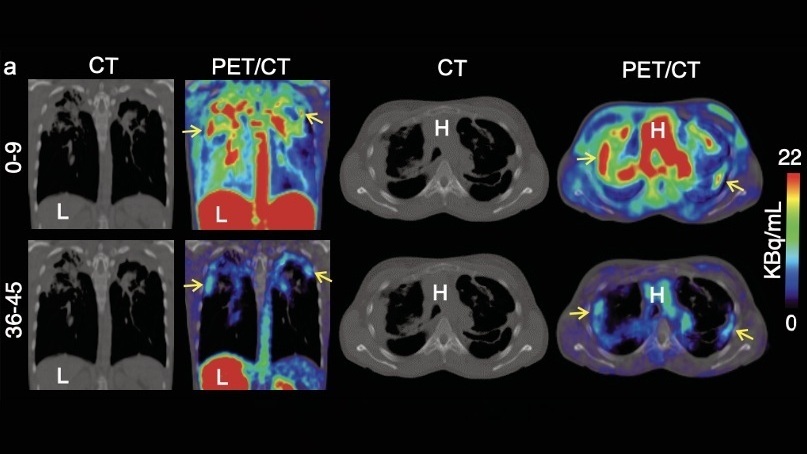
Novel Bacteria-Specific PET Imaging Approach Detects Hard-To-Diagnose Lung Infections
Mycobacteroides abscessus is a rapidly growing mycobacteria that primarily affects immunocompromised patients and those with underlying lung diseases, such as cystic fibrosis or chronic obstructive pulmonary... Read moreGeneral/Advanced Imaging
view channel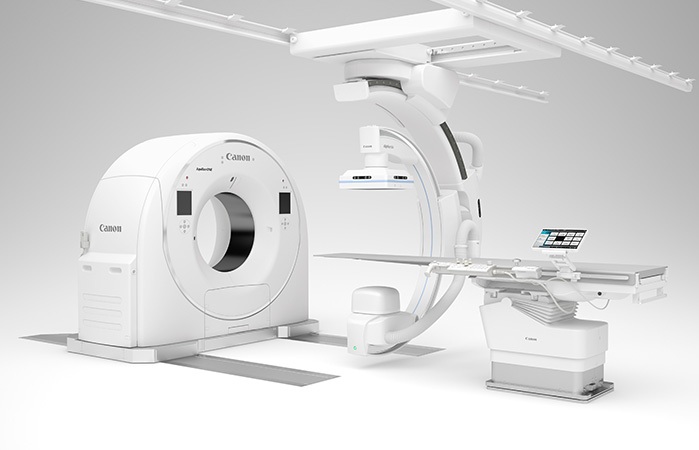
Cutting-Edge Angio-CT Solution Offers New Therapeutic Possibilities
Maintaining accuracy and safety in interventional radiology is a constant challenge, especially as complex procedures require both high precision and efficiency. Traditional setups often involve multiple... Read more
Extending CT Imaging Detects Hidden Blood Clots in Stroke Patients
Strokes caused by blood clots or other mechanisms that obstruct blood flow in the brain account for about 85% of all strokes. Determining where a clot originates is crucial, since it guides safe and effective... Read more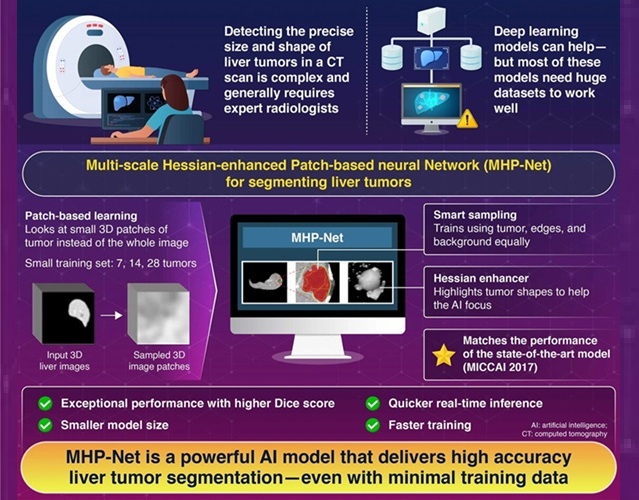
Groundbreaking AI Model Accurately Segments Liver Tumors from CT Scans
Liver cancer is the sixth most common cancer worldwide and a leading cause of cancer-related deaths. Accurate segmentation of liver tumors is critical for diagnosis and therapy, but manual methods by radiologists... Read more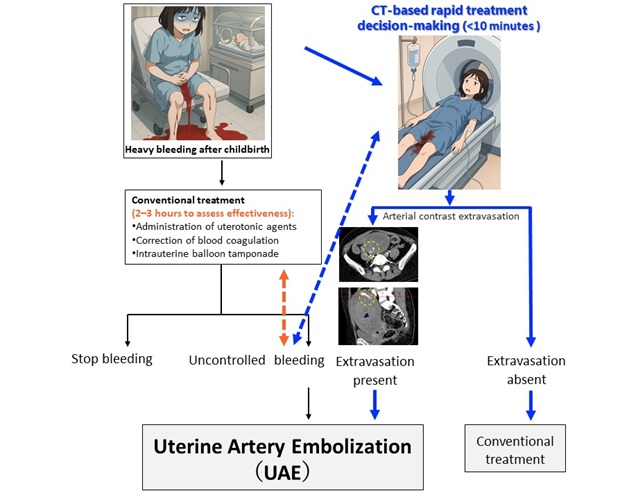
New CT-Based Indicator Helps Predict Life-Threatening Postpartum Bleeding Cases
Postpartum hemorrhage (PPH) is a leading cause of maternal death worldwide. While most cases can be controlled with medications and basic interventions, some become life-threatening and require invasive treatments.... Read moreImaging IT
view channel
New Google Cloud Medical Imaging Suite Makes Imaging Healthcare Data More Accessible
Medical imaging is a critical tool used to diagnose patients, and there are billions of medical images scanned globally each year. Imaging data accounts for about 90% of all healthcare data1 and, until... Read more
Global AI in Medical Diagnostics Market to Be Driven by Demand for Image Recognition in Radiology
The global artificial intelligence (AI) in medical diagnostics market is expanding with early disease detection being one of its key applications and image recognition becoming a compelling consumer proposition... Read moreIndustry News
view channel
GE HealthCare and NVIDIA Collaboration to Reimagine Diagnostic Imaging
GE HealthCare (Chicago, IL, USA) has entered into a collaboration with NVIDIA (Santa Clara, CA, USA), expanding the existing relationship between the two companies to focus on pioneering innovation in... Read more
Patient-Specific 3D-Printed Phantoms Transform CT Imaging
New research has highlighted how anatomically precise, patient-specific 3D-printed phantoms are proving to be scalable, cost-effective, and efficient tools in the development of new CT scan algorithms... Read more
Siemens and Sectra Collaborate on Enhancing Radiology Workflows
Siemens Healthineers (Forchheim, Germany) and Sectra (Linköping, Sweden) have entered into a collaboration aimed at enhancing radiologists' diagnostic capabilities and, in turn, improving patient care... Read more











